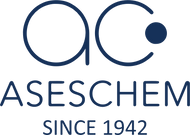Ingredients which form a thin layer on skin or on hair shaft and prevent from moisture loss are the conditioning agents.
Coming to hair care, conditioning agents play a key role in taming frizzy hair, conditioning chemically treated and damaged hair. It gives shine and lustre to the hair. These ingredients coat the cuticle and prevent damage due to heat and other environmental factors.
Few of the conditioning ingredients are cationic emulsifiers like BTMS 50, cationic guar gum aka Guar Hydroxypropyltrimonium Chloride; quaternary ammonium compounds like Centrimonium Chloride, Polyquat 7 and Polyquat 10; silicones like dimethicone, cyclomethicone and phenyl trimethicone.
You can click on the conditioning agent name to find more information and details about how to use it.
Type: Synthetic cationic emulsifier used in conditioner, shampoo bars and cream shampoo
INCI: Behentrimonium Methosulfate (and) Cetyl Alcohol (and) Butylene Glycol
How to use it?
BTMS 50 acts as an emulsifier in wash off and leave on conditioners. It emulsifies oil and water to form a cream.
It can be added to heated oil phase, melts at 60 deg C.
Why do we like it?
It is a premium conditioning ingredient which is used in majority of conditioners because of its excellent detangling and wet comb properties.
BTMS 50 alone acts as a conditioning agent without addition of any more ingredients.
Type: Synthetic Cationic Polymer
INCI: Polyquaternium-10
How to use it?
Polyquat 10 can be added in the water phase, it is water soluble.
Why do we like it?
Polyquats can be used in shampoos without worrying about its charge. Often cationic ingredients like BTMS 50 are difficult to use with anionic ingredients like sulphates etc. because of the charge repulsion, which is not the case with polyquats.
Polyquat 10 is used in many conditioners because of its detangling and curl defining properties.
Type: Synthetic Cationic Polymer
INCI: Polyquaternium-7
How to use it?
Polyquat 7 is soluble in water, can be added to water phase or cool down phase.
Why do we like it?
Polyquat 7 can be used in clear shampoos too. It doesn’t affect the clarity of shampoo.
It makes hair feel soft and bouncy. One of the go-to ingredient in DIY hair care products.
Type: Synthetic Quat/ Emulsifier
INCI: Cetyl trimethyl ammonium chloride
How to use it?
Add in water phase or cool down phase
Why do we like it?
Cetrimonium chloride is liquid conditioning and softening agent. It is also an antistatic agent, controls frizzy hair.
It can be added in clear shampoos and clear water based leave-in conditioners.
Type: Natural Cationic Polymer/ Gum
INCI: Guar Hydroxypropyltrimonium Chloride
How to use it?
Add it in glycerine to hydrate, and then add in water to dissolve easily.
Why do we like it?
GHTC is derived from natural guar beans so its's a natural conditioning agent. It is a film former which makes hair soft and manageable.
It is also a thickener and viscosity enhancer in shampoos.
GHTC can be used in CG-friendly shampoos and conditioners too.
Type: Synthetic Non-Volatile Silicone (Non- Volatile indicate that these doesn’t evaporate after application)
INCI: Polydimethylsiloxane (Comes in various viscosities like 100cst, 500cst)
How to use it?
Add to oil phase or in cool down phase. Do not heat above 50 deg C.
Why do we like it?
Majority of the leave in conditioners, hair styling products contain dimethicone and cyclomethicone because of its excellent film forming ability which makes hair smooth and shine.
Dimethicone added in lower concentration does a great job as detangler and conditioner. It also adds slip to the conditioners.
Conditioner with dimethicone is helpful for chemically treated hair since it forms a thin layer on the hair making hair less frizzy.
What do we don’t like about it?
If used in higher concentrations (or if hair is not washed frequently with cleansing shampoo), it can deposit on scalp.
Type: Synthetic Volatile Silicone (Volatile indicates that it evaporates after sometime)
INCI: Cyclotetrasiloxane, cyclopentasiloxane
How to use it?
Can be added to Oil phase; do not heat above 50 deg C because it can evaporate.
Why do we like it?
Cyclomethicone is often used in combination with dimethicone and/or dimethiconol in leave-in conditioners and sprays. It evaporates quickly leaving hair soft and silky. Products have a lighter non-greasy feel when cyclomethicone is added.
What do we don’t like about it?
Cyclopentasiloxane D4 and D5 are restricted in wash-off products in few countries because it is suspected to be accumulated in environment. However, it may not have that impact in leave on products.
Type: Synthetic Silicone
INCI: Diphenylsiloxy Phenyl Trimethicone
How to use it?
Add it with other silicones like Cyclomethicone and Dimethicone
Why do we like it?
Phenyl Trimethicone is a heat resistant ingredient which makes it suitable for styling sprays and serums. It makes hair silky and glossy.














 tissues of a woman. But the study didn’t say that parabens are from skin care products or the parabens caused cancer. This got spread widely and usage of parabens reduced.
tissues of a woman. But the study didn’t say that parabens are from skin care products or the parabens caused cancer. This got spread widely and usage of parabens reduced.